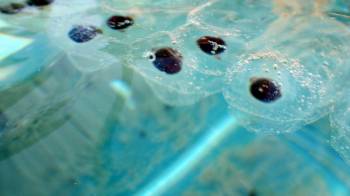Evolution & Systematics

|
|
|
Aggregate form of adult Pegea confoederata from above
(photo by Helen Twaddle, Heron Island)
|
Cephalochordates, urochordates (salps are included in this group) and vertebrates are the three extant groups that makes up the chordates. In the past, cephalochordates have been described as the closest living relatives of the vertebrates, as cephalochordates are seemingly more morphologically complex than urochordates and have more similar characteristics to vertebrates (Schaeffer 1987). However, newer evidence suggests that Urochordates are derived from a more complex ancestor and are actually more closely related to vertebrates than cephalochordates (Delsuc et al. 2006). This means that Pegea confoederata is more closely related to humans that most other invertebrate species. |